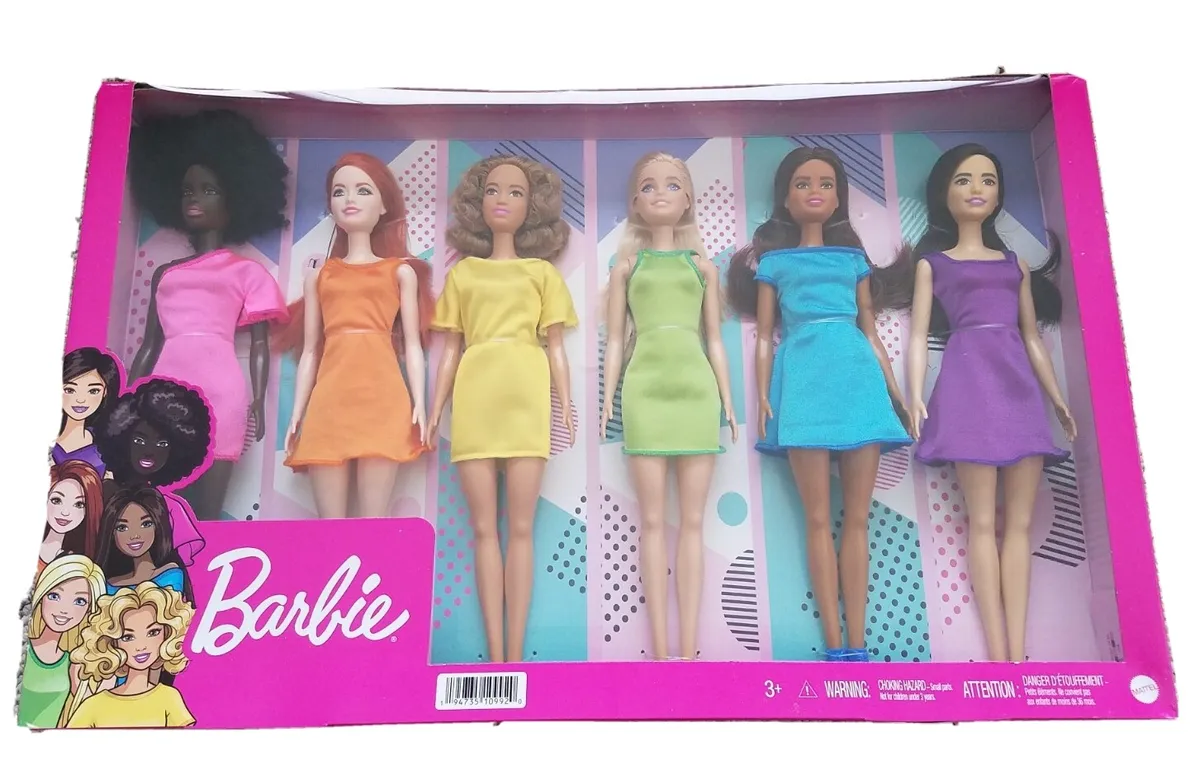Cynthia Ritchie is an accomplished author with a flair for fashion. Drawing from her extensive background in Fashion Design, she specializes in bringing the vibrant style of Barbie to life. As an established authority on Barbie's wardrobe, Cynthia offers insightful style advice and creative DIY costume solutions inspired by the iconic doll. Her passion for fashion and Barbie shines through in her writing, making her an essential voice for all things Barbie.
Yes, Barbie has faced criticism over the years for a lack of diversity in its dolls. For many years, Barbie was primarily presented as a white, blonde, slim, and able-bodied doll, which drew criticism for not accurately representing the diverse audience that played with these dolls.
When Barbie's Rainbow Lacked Colors: Initial Diversity Criticism
When Barbie was first launched in 1959, the doll was modelled after a German comic strip character named Lilli, who was a white, blonde, slim, and curvaceous figure. As Barbie gained popularity, the lack of diversity in the dolls became apparent. The criticism intensified as the years went by and was primarily centered around the lack of racial representation and unrealistic body proportions of the dolls.
Barbie's Bold Move: Responding to the Diversity Controversy
In response to the criticism, Mattel, the maker of Barbie, started to diversify the Barbie line in the late 1960s. The first African American Barbie, named Christie, was introduced in 1968. Over time, more Barbie dolls of various ethnicities were added to the line. However, these early attempts at diversity were often criticized for merely "painting" the original Barbie mold with different skin tones, instead of accurately representing the physical features of different ethnicities.

Barbie's Journey Towards a Colorful World: Ongoing Diversity and Inclusion Efforts
Despite the criticism, Mattel persisted in its efforts to diversify the Barbie line. In 2016, the company made a significant change by introducing the Barbie Fashionistas line, which included dolls with different body types (tall, petite, and curvy) and skin tones, as well as both able-bodied and disabled dolls. This was a major step towards a more inclusive Barbie universe, and the line was praised for its efforts to represent a broader demographic.
Quiz on the Evolution of Barbie's Diversity
This quiz will test your knowledge on the evolution of diversity in Barbie dolls.
Learn more about 🌟 Quiz on the Evolution of Barbie's Diversity 🌟 or discover other Best Barbie quizzes.
Today, Barbie's commitment to diversity and inclusion is stronger than ever. The brand continues to expand its representation, with dolls that have vitiligo, no hair, prosthetic limbs, and are in wheelchairs, among other features. Barbie's "You Can Be Anything" campaign also encourages children to imagine their futures without limits, further promoting diversity and inclusion.
The Ripple Effect: How Barbie's Diversity Changes Made Waves
The diversity changes in Barbie dolls have had a positive impact. The brand's efforts have been recognized and applauded by many, and the diverse dolls have been popular among consumers. However, some criticism remains. Some argue that there is still room for improvement, particularly in terms of representing more diverse body sizes and shapes, as well as more diverse abilities.
The diversity changes in Barbie dolls have had a positive impact. The brand's efforts have been recognized and applauded. As part of its commitment to diversity and inclusion, Barbie offers a wide range of dolls representing various ethnicities, body sizes, and abilities.
Despite the ongoing criticism, it is undeniable that Barbie has come a long way since its inception. The brand's commitment to diversity is evident in products like the Barbie Fashionistas Doll #166 with Wheelchair and Ramp. This doll features crimped brunette hair, a rainbow-striped dress, and comes with a wheelchair and ramp, making it a great representation of diverse abilities.
Despite the ongoing criticism, it is undeniable that Barbie has come a long way since its inception. The brand's commitment to diversity and inclusion is evident in its current doll line and initiatives, and it continues to strive for greater representation in its dolls. As a beloved childhood toy for many, Barbie has the potential to influence how children perceive beauty, diversity, and inclusion, and it is encouraging to see the brand taking steps in the right direction.



































